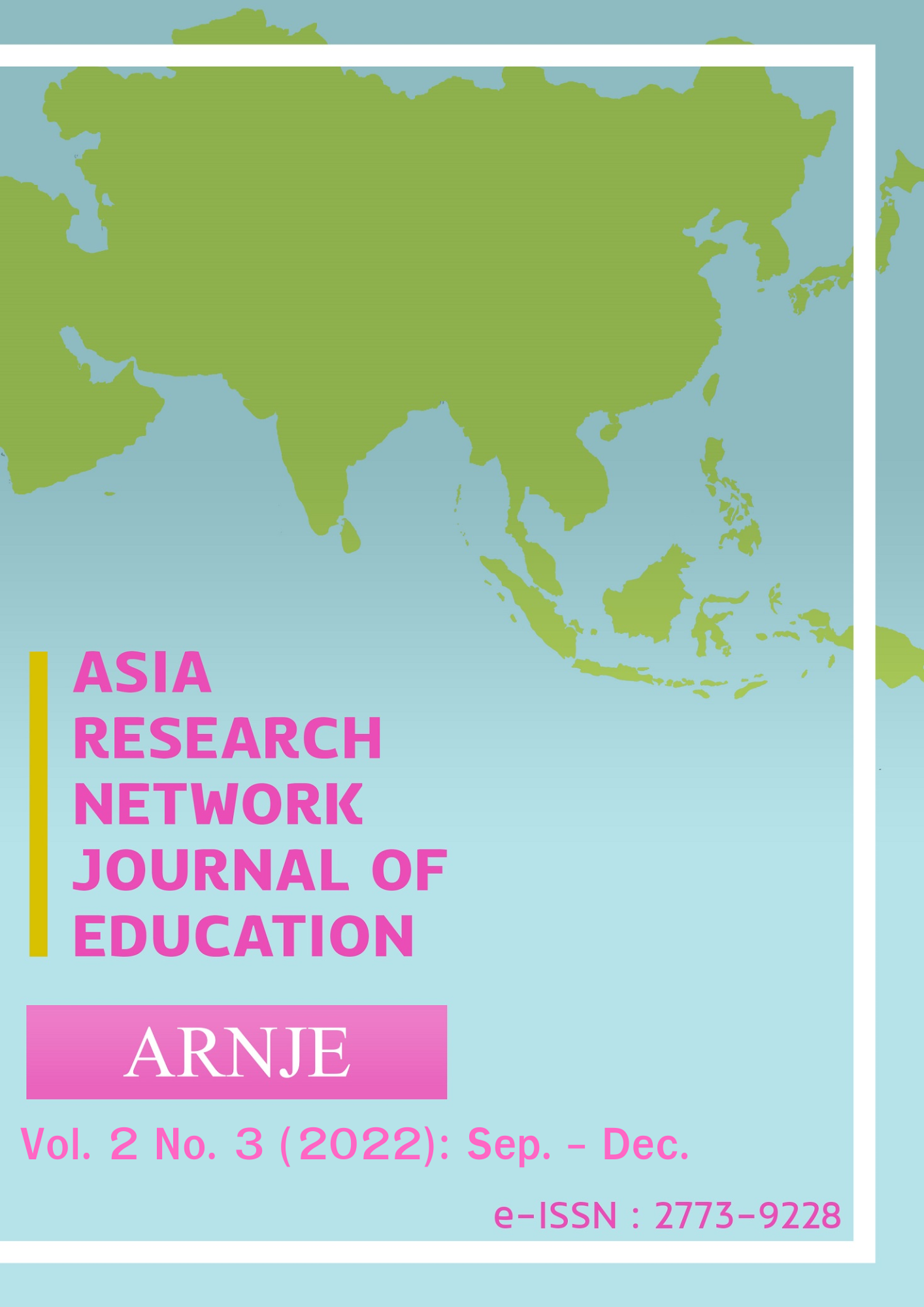Teachers’ Burnout Levels and Coping Strategies in the Time of Pandemic: Basis for a Proposed Program to Manage Teachers Burnout
Main Article Content
Abstract
Using Maslach's Burnout Inventory Scale, this study examined the burnout levels of tertiary education teachers during the pandemic. The study employed a quantitative approach to describe the profile of 36 participants and determine the degree of burnout in three dimensions: emotional exhaustion, depersonalization, and reduced personal achievement using weighted mean, frequency, and percentage. In addition, the researchers conducted a focused group discussion (FGD) to add qualitative support to the study's findings. Furthermore, a T-test was conducted to determine a significant difference in burnout levels in the three dimensions when grouped by sex and educational attainment, while, the Analysis of Variance (ANOVA) was done when teachers' grouping was according to age and faculty load units to see if there was a significant difference in burnout levels across the three dimensions. Findings revealed that most education teachers had low levels of burnout in terms of emotional exhaustion, depersonalization, and personal achievement. The FGD results showed that teachers are being burned out due to overlapping activities and meetings, overloading work, and doing tasks unrelated to teaching. Furthermore, when age and faculty load units grouped teachers, no significant differences in burnout levels were found in the three dimensions. There is a significant difference in burnout levels among female and male teachers in the dimension of personal achievement. There was a significant difference in burnout levels in depersonalization and personal achievement. The findings created a recommended program to manage teachers’ burnout.
Article Details

This work is licensed under a Creative Commons Attribution-NonCommercial-NoDerivatives 4.0 International License.
Copyright: CC BY-NC-ND 4.0
References
Arvidsson, I., Leo, U., Larsson, A. et al. (2019). Burnout among school teachers: quantitative and qualitative results from a follow-up study in southern Sweden. BMC Public Health 19, 655 https://doi.org/10.1186/s12889-019-6972-1
Akbaba, Sirri (2014). A Comparison of the Burnout Levels of Teachers with Different Occupational Satisfaction Sources. Educational Sciences: Theory & Practice. https://files.eric.ed.gov/fulltext/EJ1045091.pdf. 2014.
Bhandari, Pritha (2022). Correlational Research | When & How to Use. Retrieved: May 16, 2022, from Correlational Research | When & How to Use (scribbr.com)
Bozkuş, Kıvanç (2018). The Level of Burnout Experienced by Teachers. International Journal of Social Sciences and Education Research. DOI: 10.24289/ijsser.341790.
Busch, Carol, Paul S. De Maret, Teresa Flynn, Rachel Kellum, Sheri Le, Brad Meyers, Matt Saunders, Robert White, and Mike Palmquist. (2005). Content Analysis. Writing@CSU. Colorado State University. https://writing.colostate.edu/guides/guide.cfm?guideid=61
Caulfield, Jack (2022). How to Do Thematic Analysis | A Step-by-Step Guide & Examples. Retrieved: May 15, 2022, from How to Do Thematic Analysis | A Step-by-Step Guide & Examples (scribbr.com)
Caballes, Dennis G. and Rowena F. Panol. Teachers’ Readiness Level on Online Teaching: Embracing Distance Learning Modality. Retrieved: May 26, 2022, from https://www.researchgate.net/publication/349211437_Teachers'_Readiness_Level_on_Online_Teaching_Embracing_Distance_Learning_Modality/citations. February 2021.
Chriscaden, Kimberly. (2020). Impact of Covid-19 on peoples’ livelihood, their health, and our food systems. World Health Organization. Retrieved from:https://www.who.int/news/item/13-10-2020-impact-of-covid-19-on-people's-livelihoodstheir-health-and-our-food-systems
Cleveland Clinic (2020). Here’s how the coronavirus pandemic has changed our lives. Retrieved from:https://health.clevelandclinic.org/heres-how-the-coronavirus-pandemic-haschanged-our-lives/
Complete Dissertation by Statistics Solutions (2022). Maslach Burnout Inventory (MBI). Retrieved: December 19, 2022 from https://www.statisticssolutions.com/free-resources/directory-of-survey-instruments/maslach-burnout-inventory-mbi/
Elisha Minihana, Dimitrios Adamis, Michele Dunleavye, Angela Martin, Blanaid Gavin, and Fiona McNicholas (2022). COVID-19 Related Occupational Stress in Teachers in Ireland. DOI: https://doi.org/10.1016/j.ijedro.2021.100114.
Jacobson, Donna Ault. Causes and Effects of Teacher Burnout. Walden Dissertations and Doctoral Studies Collection. Walden University. https://scholarworks.waldenu.edu/cgi/viewcontent.cgi?article=3938&context=dissertations. 2016
Izzul Ilham Jamaludin and Huay Woon You (2019). Burnout in relation to Gender, Teaching Experience, and Educational Level among Educators. DOI: https://doi.org/10.1155/2019/7349135
Kermanshahi, Paria Norouz and Reza Pishghadam (2022). Teachers’ Burnout and their Feedback-ability. DOI: 10.30466/ijltr.2022.121185. July, 2022
Khanal, Peshal (2021). Lived Experience of Online Teaching During the Covid-19 Pandemic:Implications for Curriculum and Teaching. Available at: https://www.nepjol.info/index.php/ire/article/view/34738
Koruklu, Nermn, Burak Feyziogli, Hatice Ozenoglu-Kiremit and Elif Aladag (2012). Teachers’ Burnout Levels in terms of Some Variables. Retrieved: September 25, 2022 from https://www.proquest.com/scholarly-journals/teachers-burnout-levels-terms-some-variables/docview/1242002123/se-2
Marchand A, Blanc ME, Beauregard N. Do age and gender contribute to workers' burnout symptoms? Occup Med (Lond). 2018 Aug 11;68(6):405-411. doi: 10.1093/occmed/kqy088. PMID: 29912439; PMCID: PMC6093338.
Maheshwari V.K. (2018). Causal-comparative Research. Retrieved: May 15, 2022 from http://www.vkmaheshwari.com/WP/?p=2491
Ph.dthesis.in (2019). Guide To ‘Causal-Comparative’ Research Design: Identifying Causative Relationship Between an Independent & Dependent Variable. Retrieved: May 13, 2022 from https://www.phdthesis.in/guide-to-causal-comparative-research-design/
Rabago-Mingoa, Thelma. Filipino teachers’ stress levels and coping strategies. DLSU Research Congress 2017. https://tinyurl.com/yckpck6b De La Salle University, Manila, Philippines. 2017.
Tekdal, D. et. al. Analysis of distance education activities conducted during Covid-19 pandemic. Retrieved: May 18, 2022 from https://academicjournals.org/journal/ERR/article-full-text/157061264679
Paula Hidalgo-Andrade,et.al. (2021) Teachers’ Mental Health and Self-Reported Coping Strategies During the COVID-19 Pandemic in Ecuador: A Mixed-Methods Study. DOI: 2021:14 933–944.
Maslach, C.; Jackson, S.E. Maslach Burnout Inventory Manual, 2nd ed.; Consulting Psychologists Press: Palo Alto, CA, USA, 1986.
Minihan, Elisha et.al (2022). COVID-19 Related Occupational Stress in Teachers in Ireland. DOI: https://doi.org/10.1016/j.ijedro.2021.100114
Navita, Noriel C., and Aida A. Casas (2021). Teacher Burnout During Pandemic: Basis for A Resilience Based Faculty Development Plan. DOI: https://orcid.org/0000-0002-0314-4152
Sarikaya, M. (2021). An investigation of the relationship between COVID-19 anxiety and burnout among music teachers. International Journal on Social and Education Sciences (IJonSES), 3(4), 789-806. https://doi.org/10.46328/ijonses.274
Smith, Gregory S. et al. (2022). Assessment of Medical Student Burnout: Toward an Implicit Measure to Address Current Issues. DOI: http://dx.doi.org/10.1007/s10459-021-10089-0. May, 2022
Ventayen-Orlanda, Caren Casama and Randy Joy Ventayen. Stress and Depression in the Workplace of Educators in the Philippines. https://doi.org/10.1101/2021.04.22.21254017. April 25, 2021.
World Health Organization (2019). Burn-out an "occupational phenomenon": International Classification of Diseases. Retrieved: April 15, 2022, from https://tinyurl.com/yjm7tftv
Wijaya, Bakhitah Jihan and Endang Prastuti (2021). The Contribution of Workload and Stress towards Burnout in Special Needs Teachers. DOI: 10.18502/kss. V4i15.8215. May 20, 2022.
.


